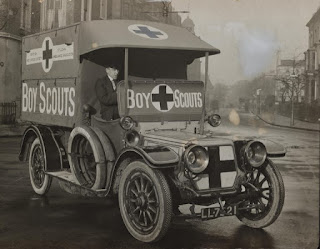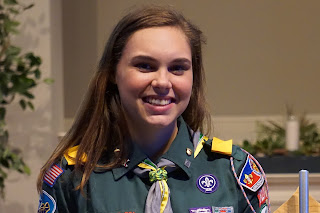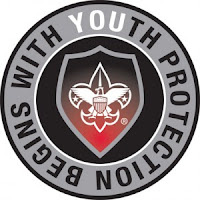Scouting in a Pandemic - A little history
Scouting in a Pandemic - A Little History
1918-1919 Spanish Flu Pandemic
 |
This article is from Scouting, Volume 6, Number 30, December 5, 1918 |
While Scouting had been mobilized during World War I to support America's war effort, they were called upon also to support the effort to stop the spread of the Spanish Flu. According to the CDC the 1918 Pandemic of the H1N1 virus (Spanish Flu) spread world wide during 1918-1919. "It is estimated that about 500 million people or one-third of the world's population became infected with this virus. The number of deaths was estimated to be at least 50 million world wide with about 675,000 occurring in the United State." (source: https://www.cdc.gov/flu/pandemic-resources/1918-pandemic-h1n1.html)
The help of the Boy Scouts was enlisted to distribute information about influenza printed by the state Board of Health to all the homes.
Scouts in New York City, where the flu killed an estimated 20,000 to 24,000, stopped people from spitting in the street, which was believed to spread the flu. "Then there was the matter of all that spitting. At the height of the epidemic, in the fall, Boy Scouts stopped spitters on the street and handed them printed cards that said: “You are in violation of the Sanitary Code.”"
(NYTimes, April 30, 2009)
Scouts in New York City, where the flu killed an estimated 20,000 to 24,000, stopped people from spitting in the street, which was believed to spread the flu. "Then there was the matter of all that spitting. At the height of the epidemic, in the fall, Boy Scouts stopped spitters on the street and handed them printed cards that said: “You are in violation of the Sanitary Code.”"
(NYTimes, April 30, 2009)
Scouts to Distribute Influenza Literature
Girl Scouts and the Spanish Flu
Avian/Bird Flu Pandemic, Scouting Safety
What You Can Do (source: Scouting Safety)
- Stay home when sick
- Practice respiratory and hand hygiene
- Cover your cough
- Wash hands regularly and use alcohol hand gel. Proper washing of hands consist of at least 20 seconds of rubbing.
- Avoid touching eyes, nose, mouth
- Implement “social distancing” measures
- At point of outbreak, use N95 facial masks
- Be prepared for pandemic planning




